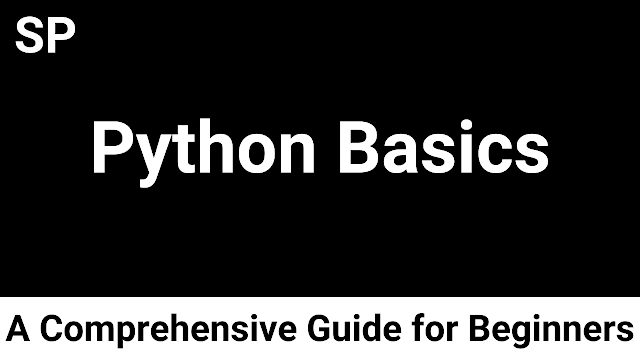Python Basics: A Comprehensive Guide for Beginners
Python Basics: A Comprehensive Guide for Beginners
Python is one of the most popular programming languages in the world. Known for its simplicity and readability, it is widely used for web development, data science, artificial intelligence, and automation. This article provides a detailed overview of Python basics to help beginners get started.
 |
| Python Basics: A Comprehensive Guide for Beginners. |
What is Python?
Python is a high-level, interpreted programming language designed for simplicity and versatility. Created by Guido van Rossum and first released in 1991, Python emphasizes code readability, enabling developers to write clean and maintainable programs. Its wide range of libraries and frameworks makes it a powerful tool for various applications.
Installing Python
To start coding in Python, you first need to install it. You can download the latest version from the official Python website. Python comes with an integrated development environment (IDLE), but you can also use editors like Visual Studio Code, PyCharm, or Jupyter Notebook.
Python Syntax and Structure
Python’s syntax is clean and straightforward, making it an excellent choice for beginners. Here's an example of a simple Python program:
print("Hello, World!")
Explanation:
print()is a built-in function that outputs text to the console.- Strings are enclosed in either single or double quotes.
Variables and Data Types
In Python, variables do not require explicit declaration. The data type is inferred based on the assigned value.
x = 10 # Integer
y = 3.14 # Float
name = "John" # String
is_active = True # Boolean
Common Data Types:
- int - Integer values.
- float - Decimal numbers.
- str - Text or string values.
- bool - True or False values.
- list - Ordered collection of items.
- tuple - Immutable ordered collection.
- dict - Key-value pairs.
Control Structures
Python provides conditional statements and loops to control the flow of execution.
1. Conditional Statements:
age = 18
if age >= 18:
print("Adult")
else:
print("Minor")
2. Loops:
- For Loop:
for i in range(5):
print(i)
- While Loop:
count = 0
while count < 5:
print(count)
count += 1
Functions
Functions allow you to organize code into reusable blocks.
Example:
def greet(name):
return f"Hello, {name}!"
print(greet("Alice"))
Explanation:
defdefines a function.- Functions can accept parameters and return values.
Working with Lists and Dictionaries
Lists:
fruits = ["apple", "banana", "cherry"]
fruits.append("orange")
print(fruits[0]) # Accessing elements
Dictionaries:
person = {"name": "John", "age": 30}
print(person["name"])
person["city"] = "New York"
Modules and Libraries
Python’s strength lies in its vast ecosystem of libraries and modules. You can import built-in modules or install third-party packages using pip.
Example:
import math
print(math.sqrt(16))
File Handling
Python allows reading and writing files easily.
with open("example.txt", "w") as file:
file.write("Hello, File!")
with open("example.txt", "r") as file:
content = file.read()
print(content)
Benefits of Learning Python
- Beginner-Friendly: Easy to learn and understand.
- Versatile: Suitable for web development, data science, machine learning, and more.
- Extensive Libraries: Rich set of libraries and frameworks.
- Community Support: Large community for help and resources.
- Career Opportunities: High demand in industries.
Conclusion
Python is an accessible yet powerful programming language, perfect for beginners and experienced developers alike. By learning the basics of syntax, data structures, and control flow, you can start building simple programs and advance to complex applications. With endless resources and a supportive community, Python is an excellent choice for anyone looking to enter the world of programming.




